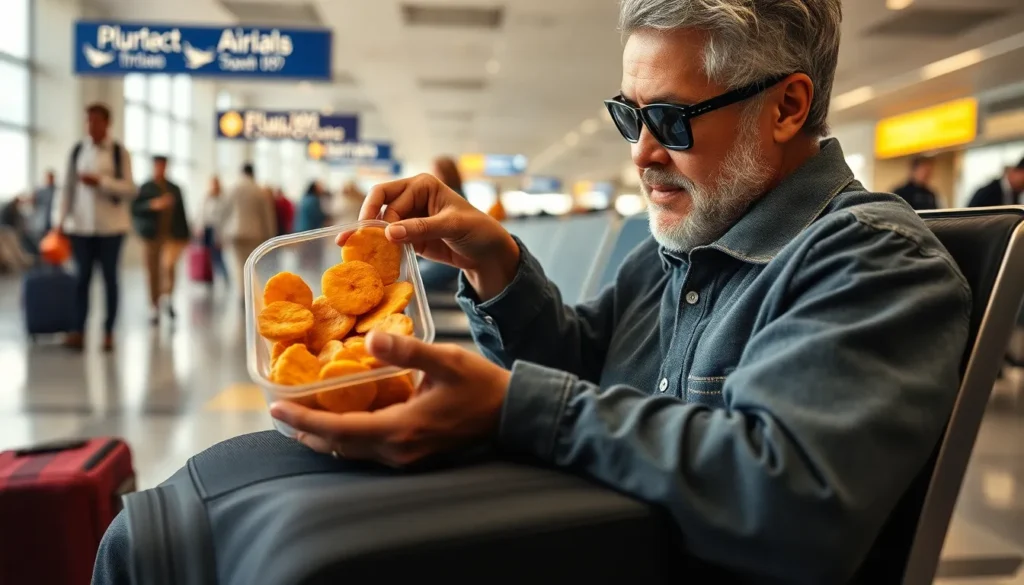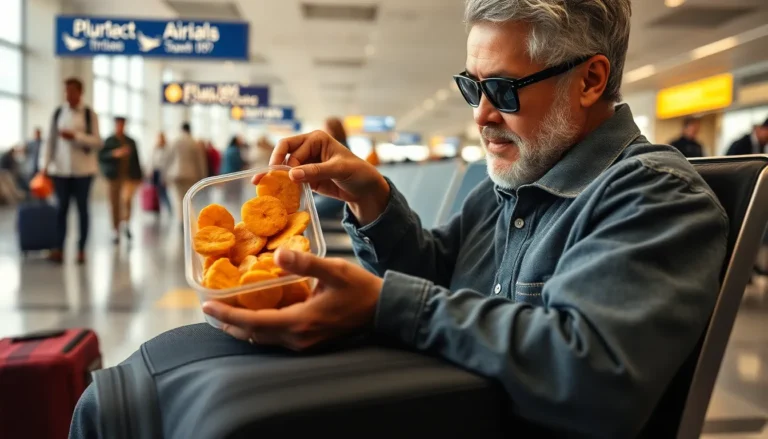Table of Contents
ToggleTraveling can be an adventure, but figuring out what food to pack can feel like a game of Tetris. If you’re wondering whether you can bring kayudapu on a plane, you’re not alone. Many travelers face the dilemma of wanting to enjoy their favorite snacks while navigating the rules of air travel.
Imagine biting into that delicious kayudapu mid-flight and feeling like a culinary hero. But before you channel your inner food crusader, it’s crucial to know the ins and outs of airline regulations. After all, no one wants to be the person who gets their tasty treats confiscated at security. So, let’s dive into the world of in-flight snacking and discover if kayudapu can join the ranks of your travel companions.
Overview of Kayudapu
Kayudapu is a traditional snack popular in various regions. Made from plantain or yam, it features a crispy texture and distinct flavor profile. Commonly, this snack includes spices and seasonings, enhancing its appeal. Many enjoy kayudapu for its convenience and satisfying crunch.
In terms of ingredients, kayudapu primarily consists of a starchy base and seasonings. The preparation method can vary by region or personal preference. Often, cooks slice, fry, and season it to enhance the overall taste and texture.
When considering kayudapu for air travel, travelers must check regulations regarding food items. Specific airline policies may restrict certain snacks. Packaging plays a crucial role in meeting security guidelines, as it must be sealed or stored appropriately.
Security personnel at airports may scrutinize snacks closely. Familiarity with airport rules can ease the process of traveling with kayudapu. Travelers are encouraged to research carry-on food regulations of airlines in advance.
For long flights, kayudapu serves as a delightful in-flight snack. It provides a savory option, differing from standard airplane meals. Enjoyment of this snack can add a personal touch to the travel experience.
Understanding how to pack kayudapu ensures compliance with safety measures. Choosing a suitable container helps prevent spills or spoilage. Ultimately, enjoying this unique snack while traveling enhances the overall journey.
Airline Regulations on Food Items

Travelers must understand airline regulations regarding food items, especially when planning to bring snacks like kayudapu on board. Rules can vary widely between airlines, so checking specific policies remains essential.
General Guidelines
Airlines typically allow solid food items in carry-on baggage. Liquid and gel foods, however, usually face restrictions due to security protocols. Each traveler can carry snacks that fit within their baggage allowance. Proper packaging is vital to prevent messes, particularly with delicate items. Familiarity with TSA regulations ensures a smoother travel experience. Different countries may impose additional rules concerning food imports. Staying informed helps avoid baggage delays.
Specific Rules for Kayudapu
Kayudapu, a popular snack, often faces scrutiny at security checkpoints. This snack must be packaged securely to mitigate spillage or contamination. Travelers should check if airline policies specifically mention kayudapu, as some regions may have restrictions on certain ingredients. Addressing customs regulations is also critical, particularly when flying internationally. If unsure, it’s best to contact the airline directly for clarification about kayudapu. Enjoyment of this favorite snack can enhance the flight experience, provided that it complies with established guidelines.
Safety and Security Considerations
Travelers must consider safety and security rules when bringing kayudapu on a plane. Understanding specific guidelines can prevent issues at checkpoints.
Transportation of Perishable Foods
Perishable foods present unique challenges during air travel. The TSA generally permits solid snacks, but many airlines recommend avoiding items that require refrigeration. Kayudapu, as a dry snack, is suitable for flights. While the snack doesn’t spoil quickly, moisture can affect its quality. Storing kayudapu in a cool, dry place before a flight helps maintain its crispiness. For long-haul journeys, packing spare snacks might be wise as well.
Packaging Requirements
Proper packaging ensures compliance with security regulations. Kayudapu should be stored in an airtight container to prevent breaks or spills. Using resealable bags can also be effective for easy access. Labeling the packaging can further streamline the security process by identifying contents. Official guidelines recommend avoiding decorative packaging that might confuse security personnel. Select clear containers to facilitate quick inspections at checkpoints.
Cultural Considerations
Travelers should recognize the cultural significance of kayudapu. This snack often represents heritage and communal joy. In various regions, kayudapu is not merely food; it’s a connection to one’s roots and traditions. Consuming it aboard a flight can evoke nostalgia and a sense of belonging.
Respecting local customs while traveling is essential. Many airlines serve regional cuisines, yet bringing personal snacks like kayudapu reflects individual taste. Some may view snacking on kayudapu as a way to promote cultural appreciation during international travel. Observing fellow passengers’ reactions can also provide insight into perceptions of different foods.
Enjoying kayudapu on a plane requires mindfulness regarding local and international regulations. While solid snacks typically comply with most airline policies, it’s wise to consider potential cultural sensitivities. Some cultures may hold specific views on bringing food from home, especially during long flights. Clear communication with airline staff might help alleviate any concerns.
Gathering insights on cultural influences surrounding food enhances the travel experience. Each region has unique food customs and etiquette, which can enrich interactions with fellow travelers. Sharing kayudapu with neighbors might foster conversations and connections.
Packaging kayudapu neatly shows respect for the airline’s overarching policies. Travelers might consider including a brief note about the snack’s cultural background, facilitating understanding. Emphasizing cultural connections through food can transform a simple snack into an enriching cultural exchange, making each flight a journey of shared experiences.
Travelers can enjoy kayudapu on flights by adhering to airline regulations and ensuring proper packaging. This traditional snack not only satisfies cravings but also connects individuals to their cultural roots. By understanding the rules around food items and preparing kayudapu thoughtfully, passengers can enhance their in-flight experience while avoiding potential issues at security checkpoints.
Whether it’s sharing with fellow travelers or savoring it alone, kayudapu adds a personal touch to any journey. Keeping these considerations in mind allows travelers to indulge in their favorite snacks without compromising safety or compliance.







